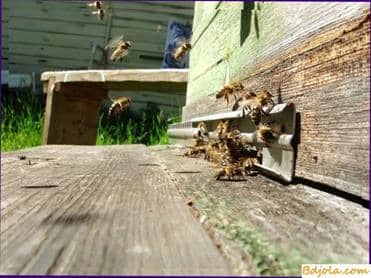Protein feeding of bees

Bee families in many cases feel a lack of protein feed – pollen. For example, in early spring, there often does not occur flowering plants in nature, or plants bloom at a time when unfavorable weather prevents the bees from flying out of the hives and the stocks of pengu in the nests quickly run out. Especially often there is no pollen in the steppe areas, where the main fields are occupied by crops blooming in later periods.
The lack of pollen and perga reduces the brood rearing, slows the growth of families and leads to the inferior (light) bees’ withdrawal. Sometimes bees even throw out larvae from hives.
To collect the pollen of the apiaries it is useful to take out early honey-bearing and pollen-bearing plants (different types of willows, forest shrub, meadow meadows) to the flowering places. In spring, bees do not fly far from the apiary, so the bee pollen is more likely to be brought to the apiary, the hives are divided into small groups (20-30 families each).
Attempts to combine in one product both carbohydrate and protein food for bees did not yield positive results. In the hive there are two groups of bees that feed in different ways: young wet-nurses who eat pollen willingly and much, and flying bees that eat only honey. Excess protein and other substances in the feed will not correspond to the normal feeding of the field bees, and the excessive workload of sugar food will not satisfy the needs of the bees-nurses.
Bees have historically adapted to eating two kinds of food, and if we want to feed the bees rationally, then we need to give them separately two kinds of food – carbohydrate (honey, sugar) and protein-vitamin.
Protein feeding of bees
